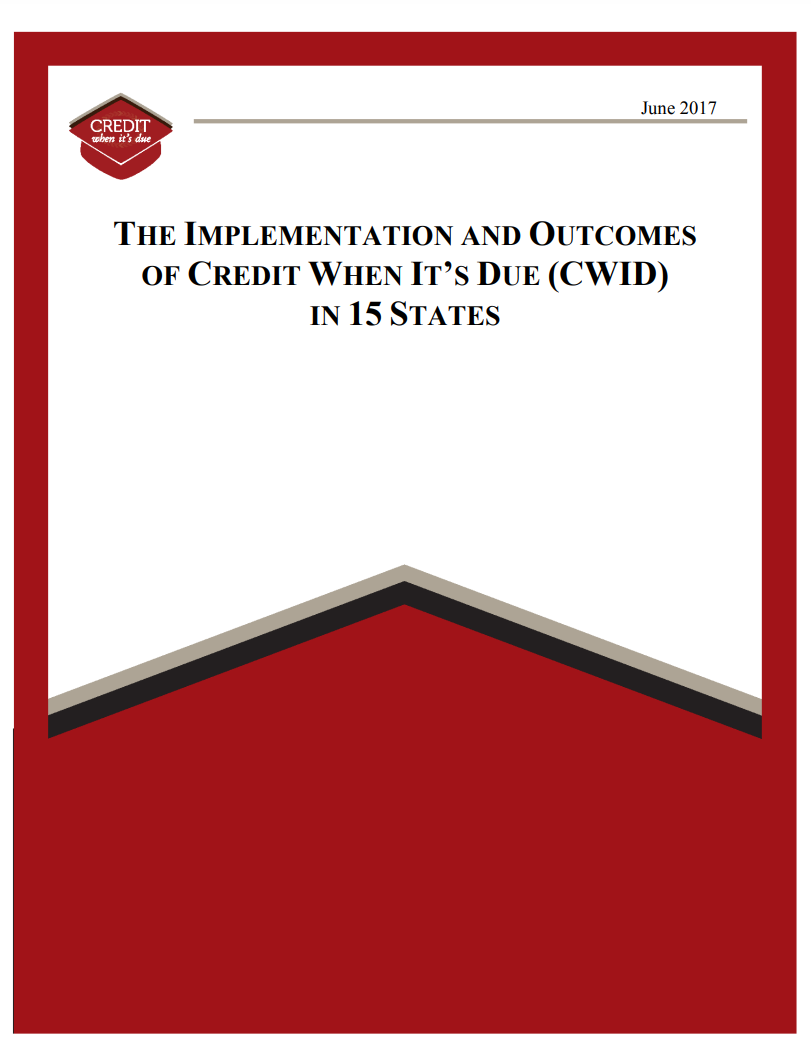Implementation and Outcomes of Credit When It's Due in 15 States
Author(s): Jason L. Taylor, Sheena A. Kauppila, Edén Cortez-Lopez, Maria Claudia Soler, Cari Bishop, Elizabeth Meza, Heather McCambly, Debra D. Bragg
Publisher: Community College Research Initiatives (CCRI)
Year: 2017
Description
In 2012, five foundations partnered to launch the Credit When It’s Due (CWID) initiative that was “designed to encourage partnerships of community colleges and universities to significantly expand programs that award associate degrees to transfer students when the student completes the requirements for the associate degree while pursuing a bachelor’s degree” (Lumina Foundation, 2012, n.p.), also known as reverse transfer, or reverse credit transfer. These five foundations were the Bill & Melinda Gates Foundation, Helios Education Foundation, Kresge Foundation, Lumina Foundation, and USA Funds. In 2013, four additional states joined CWID, as did a sixth foundation: the Greater Texas Foundation.
This report represents the culmination of a 4-year study that documented the implementation and outcomes of reverse credit transfer involving 15 states from their first implementation of CWID in fall 2012 through to summer 2016. State-level CWID grants focused on the policy, program and practice changes, and student enrollment and outcomes of state systems and/or higher education institutions (twoand 4-year degree conferring) whereby each state developed and implemented reverse credit transfer, engaged in policy development, and sought student completion outcomes. Variation was prominent in implementation within and across the 15 states, with nearly 16,000 students being awarded an associate’s degrees through CWID between 2013-14 and 2015-16.

